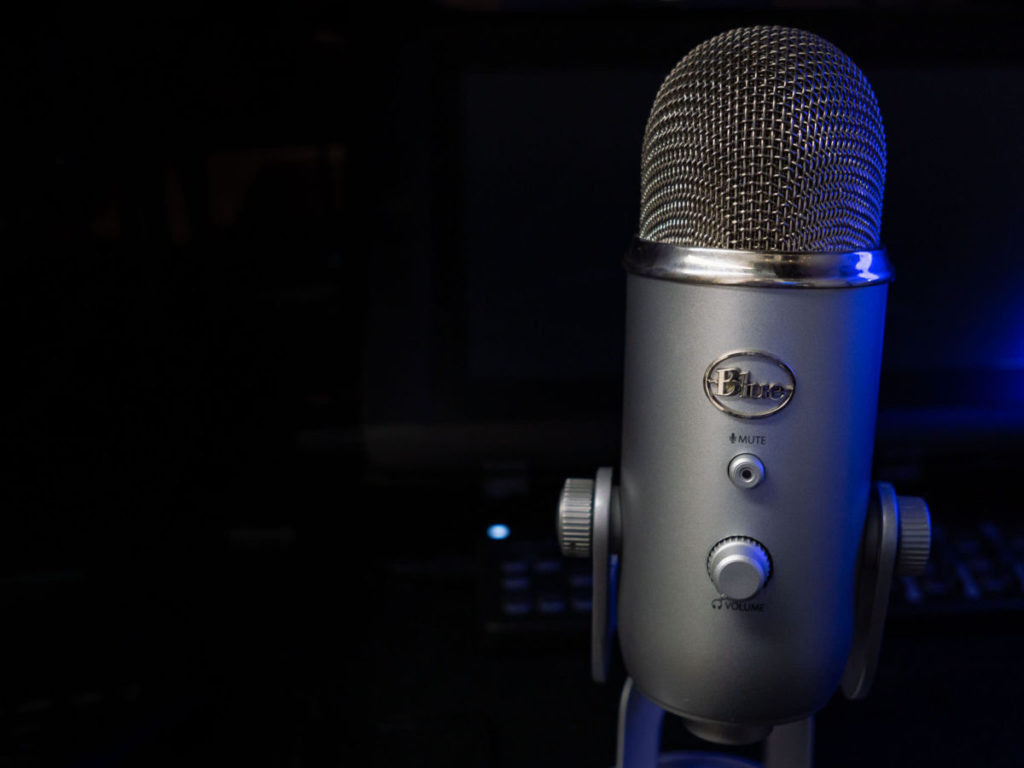Blue Yeti USB Microphone Review
Blue Yeti USB - Overview

Blue Yeti USB - Specifications
- Power Required/Consumption: 5V 150mA
- Sample Rate: 48 kHz
- Bit Rate: 16-bit
- Capsules: 3 Blue-proprietary 14mm condenser capsules
- Polar Patterns: Cardioid, Bidirectional, Omnidirectional, Stereo
- Frequency Response: 20Hz - 20kHz
- Max SPL: 120dB (THD: 0.5% 1kHz)
- Impedance: 16 ohms
- Power Output (RMS): 130 mW
- Frequency Response: 15 Hz - 22 kHz
- Signal to Noise: 100dB
- Connector: USB
- Dimensions (extended in stand): 4.72" (12cm) x 4.92"(12.5cm) x 11.61"(29.5cm)
- Weight (microphone): 1.2 lbs (.55 kg)
- Weight (stand): 2.2 lbs (1 kg)
What's in the box?
- Blue Yeti microphone
- Yeti mic stand
- manual
- usb cable
Blue Yeti USB - PROS
- usb capable
- multiple polar patterns
- allows for monitoring
- mute button
- Plug 'n Play ready
Blue Yeti USB - CONS
- unreasonably large formfactor
- no shock absorption in microphone or stand
- poor build-quality
- noisy headphone preamp
- poor signal quality
Detailed Review
Blue yeti Pickup Patterns
Cardioid Mode
With its cardioid mode, the Blue Yeti offers a directional recording pattern that is great to isolate a sound signal from other sources and to minimize reflections that could enter from the opposite direction.
The cardioid mode is the most commonly used pattern among all types of microphones.
Stereo Mode
The Blue Yeti's stereo mode allows for capturing a lively stereo image.
A stereo image is often used when recoding ambient sounds to draw in the listener.
Omnidirectional Mode
In the Omnidirectional mode, the Blue yeti suffers from virtually no proximity effect.
Additionally, you can have people around the microphone and record all sound sources without changing the signals' EQ's.
Bidirectional Mode
The Blue Yeti's bidirectional mode allows to either capture a signal with a very narrow space of sensitivity and isolate it from sound sources very close, or to record two people, each on an opposite side of the microphone.
Blue Yeti Build-Quality
To be frankly, the Blue Yeti's build quality is far from exceptional and lacking behind most microphones to be found in the same price range.
Possibly, the Yeti microphone was priced as one of the very few mics to feature multiple pickup-patterns and therefore always had little competition on this one feature.The Blue yeti is mostly made out of plastics, and the only substantial piece is its stand. Knobs and switches are made from plastic, too, and mostly wobbly when trying to change settings.
when we opened the microphone, to check it's internals, we were surprised over its spacious form factor, has it only three tiny mic capsules built-in and an SMD circuit.Nothing that justifies its enormous size!
Blue Yeti Sound Quality
When we put the Blue Yeti mic through its paces, we hoped for reasonable results. Considering the mic is usually to be found above $100, that's likely the same expectation every buyer will have.
Unfortunately the sound quality was not great! Daniel - ALL GEARED UP
Despite the fact we had a constant feep sound in all of our recordings, the recordings had a very high noise floor. The mic is advertised with a phenomenal 100dB signal to noise ratio; we, however, believe the microphone cannot hold true to marketing's promises.
Best Use Case / Verdict
The Blue Yeti microphone is best used as a table-top, decoration item, and not in a recording environment.
We are very much convinced our model was not far from every other model out there and the quality the blue yeti microphone produces is very much unsatisfying, leaning towards unacceptable. (Especially for the price)
It again proves how much value can be found in marketing. On the other hand, all the money spent on marketing could have been spent on producing a usable microphone!
More Gear Recommendations
As we really can not recommend buying the Blue yeti at this point, we have a few recommendations that get you started for a better price to sound quality ratio!

